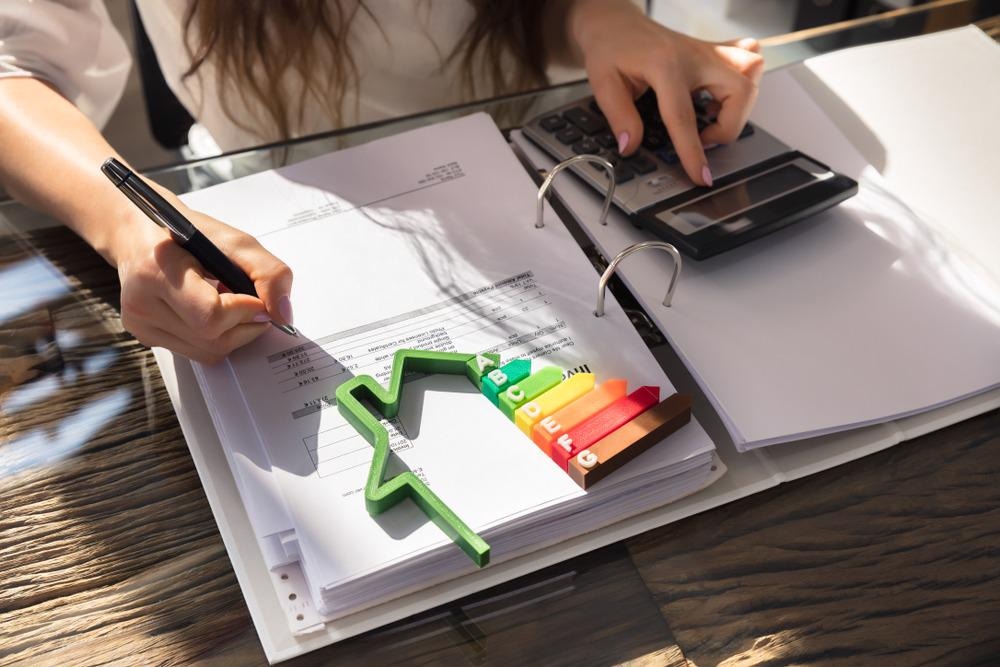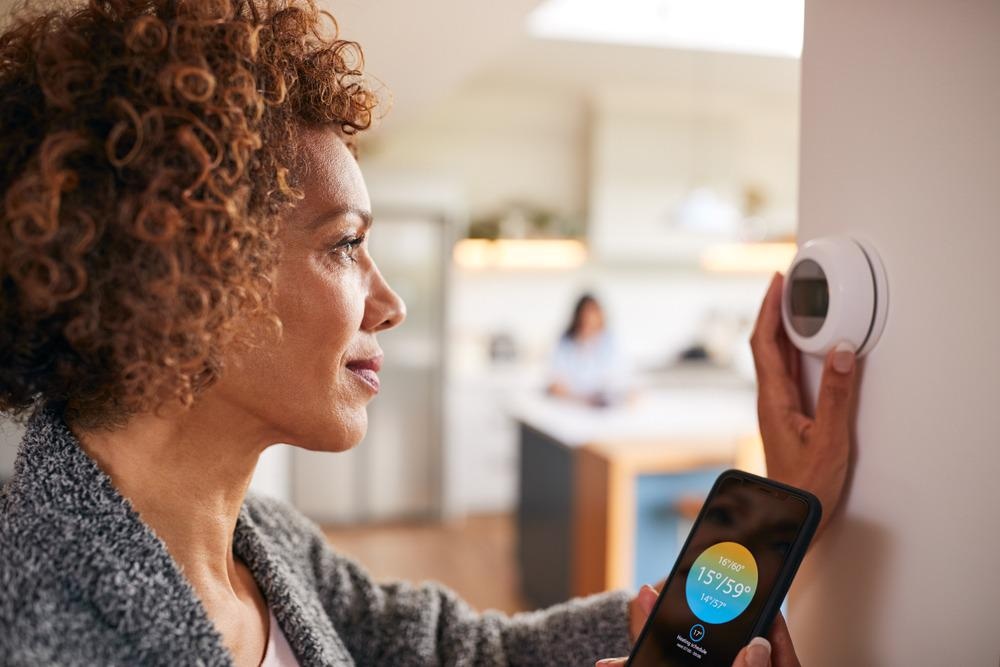Reducing the consumption of energy in a home is not only an environmentally friendly decision but also allows one to save on energy costs each month. The following paper will discuss different devices and methods that can be put in place to reduce the overall energy usage in the home.

Image Credit: Andrey_Popov/Shutterstock.com
The most basic or easiest way to reduce energy consumption in a home is the reduction of appliance usage as much as possible.
Another more expensive method is buying more energy-efficient appliances or, alternatively, standalone technologies such as smart thermostats. Such technologies have been developed and are designed to reduce the consumption of energy in your home.
A smart thermostat and other accessories help reduce the power your current appliances take up. Such accessories will help reduce what is known as ‘vampire power’, a term used to refer to the small power that is drained when an appliance is plugged in.
In the US, the energy department estimates that some homeowners can pay up to $200 more per year in energy costs because of vampire power.
Smart Thermostats for Greater System Control
A smart thermostat is one of the most efficient methods to reduce the cost of energy in your home. As opposed to leaving your HVAC (heating, venting, and cooling) systems continuously running the whole day in your home even when you aren't there, with the smart thermostat you can get control over the entire system.
A smart thermostat from Nest has the ability to connect to your smartphone and Wi-Fi. Therefore, you can operate and adjust the temperatures even while you're away from home. It also has the ability to make schedules according to how you use these systems.
With the smart thermostat, you can still turn off the heat if you forgot to turn it off if you are away from home.

Image Credit: Monkey Business Images/Shutterstock.com
Smart Light Bulb
The newly developed Smart light bulbs can help you reduce your energy consumption the same way in which the smart thermostat works. Smart bulbs from TP-links Kasa can also be controlled using your smartphone or with voice commands using the smart home hub like the Amazon Echo.
Using the app on your mobile phone, you can turn the lights on and off or even adjust the brightness or dimness of these bulbs. There is also the ability to place the smart bulbs on a schedule, allowing for greater automation and efficiency.
Solar Powered Battery Pack
One of the most common and easiest ways to reduce energy costs is the use of solar power in a home, especially in sunny areas. These solar batteries come with solar panels and are the ones that are responsible for changing the energy from solar power to electric power. This electric power is then stored in the batteries.
Depending on the number of panels and batteries, solar power can power your lights, charge your phones, power the fridge and other small appliances. A battery from ADDTOP digital technology is equipped with two USB ports, therefore allowing you to charge multiple devices continuously. This external solar battery has a capacity of 25000mAh.
Smart Outlets
Having to replace all your appliances with more energy-efficient devices can be very expensive. The introduction of smart outlets can slowly help you achieve that. A smart outlet or plug is designed in such a way that once an appliance is connected to it, the smart outlet can be controlled by being connected to the home Wi-Fi and phone application.
With the app, you can turn on or off devices such as microwaves, dishwashers, washing machines that you may have accidentally kept running before you left for work. This ultimately reduces the vampire power that significantly drains power.
Solar Powered Generator
This can be a big investment that can help you reduce electrical bills. Explorer generators from Jackery are a very good choice as they can convert 23% of solar energy into electrical energy as opposed to 15% of most solar generators. This type of solar generator is also very portable and can therefore be used for camping and other outdoor activities.
Further Reading: Sustainable Building Trends for the Future
Solar Powered Outdoor Smart Lights
A common investment used to reduce energy consumption are lights that are equipped with motion sensors. Solar-powered outdoor lights build on this technology by being fully powered by a solar panel. Further, these bulbs can illuminate your driveway at night and can also be controlled by your mobile phone using an app.
Switching to More Efficient Technology
If you have to constantly charge your laptop or phone every few hours, it is probably not efficient and will use more power. A more power-efficient laptop such as Apple's new MacBook Air runs on a custom M1 chip that can work up to 18 hours of battery life before it needs to be recharged. Technology such as this will allow you to spend less time and energy having to charge.
Solar Water Heating Systems
Flat plate collectors are suitable for water heating. A flat plate collector mainly consists of a black metal plate for absorbing solar energy, tubes attached to the black plate to carry the heated water, thermal insulation behind the black plate, and a box with a transparent cover.

Image Credit: Yeamake/Shutterstock.com
Another type of solar-heated water system is an evacuated tube collector. Each tube has a black absorbent which absorbs the solar energy to heat the water. The tubes contain a vacuum to prevent heat loss. An evacuated tube collector can heat water up to 100 degrees Celsius.
Future Implications and Usages
About 22% of all carbon emissions in the UK come from homes; therefore, a switch to alternative energies to reduce energy consumption helps to greatly reduce the carbon footprint released from each home. In conclusion, there are many other more alternative technologies that exist to help reduce expenses on energy and also promote renewable energy.
However, some of these alternative energies are more practical in some countries than in others. For example, in a sunny country it is more applicable to go for solar-powered electricity including solar water heating systems and solar generators, especially in remote areas.
In general, there are enough technologies to go around to meet the preferences for each individual's likes or budgets.
Further Reading and References
Lester, P., (2015). Future Home Tech: 8 Energy-Saving Solutions on the Horizon. [online] Energy.gov. Available at: <https://www.energy.gov/articles/future-home-tech-8-energy-saving-solutions-horizon>
Bhatia, S. (2014) "Solar thermal energy", Advanced Renewable Energy Systems, pp. 94-143. doi: 10.1016/b978-1-78242-269-3.50004-8. Available at: https://www.sciencedirect.com/science/article/pii/B9781782422693500048
Ranj, B. and Ranj, B.,(2021). These 9 Accessories Could Help Lower Your Energy Bill In 2021. [online] Rolling Stone. Available at: <https://www.rollingstone.com/product-recommendations/smart-home/best-energy-saving-tech-981759/>
Disclaimer: The views expressed here are those of the author expressed in their private capacity and do not necessarily represent the views of AZoM.com Limited T/A AZoNetwork the owner and operator of this website. This disclaimer forms part of the Terms and conditions of use of this website.